Plane Figures - Definition, Examples, Quiz, FAQ, Trivia
Discover the world of 2D shapes and how they form the building blocks of geometry!
What are Plane Figures?
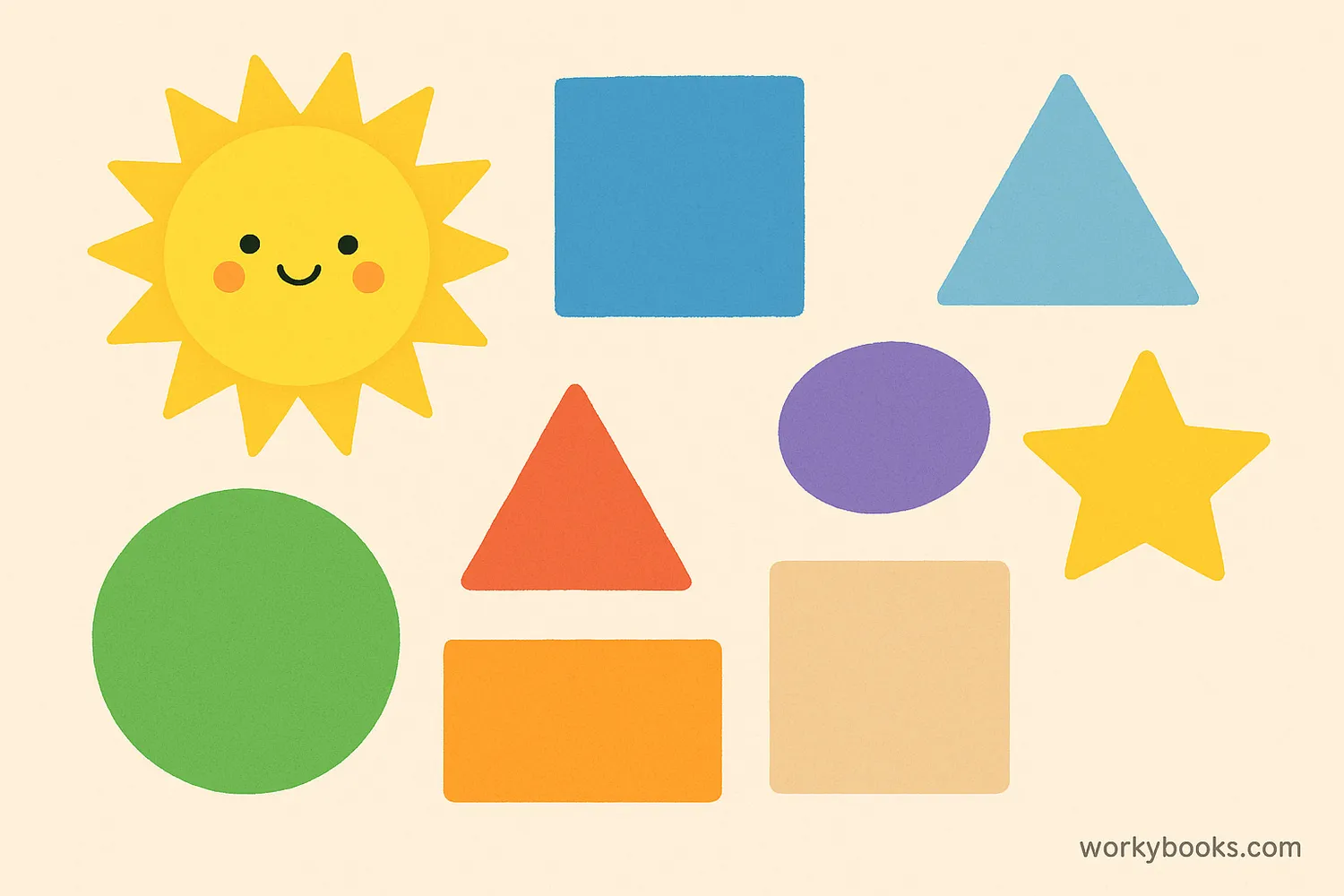
Plane figures, also called 2D shapes, are flat shapes that have length and width but no depth or thickness. They exist on a single plane, which means they're completely flat like a piece of paper.
Think of plane figures as shapes you could draw on paper without any parts sticking up. They have only two dimensions - length and width. Some common examples include circles, squares, triangles, and rectangles.
Math Fact!
The word "geometry" comes from Greek words meaning "earth measurement," showing how these shapes help us understand and measure our world!
Properties of Plane Figures
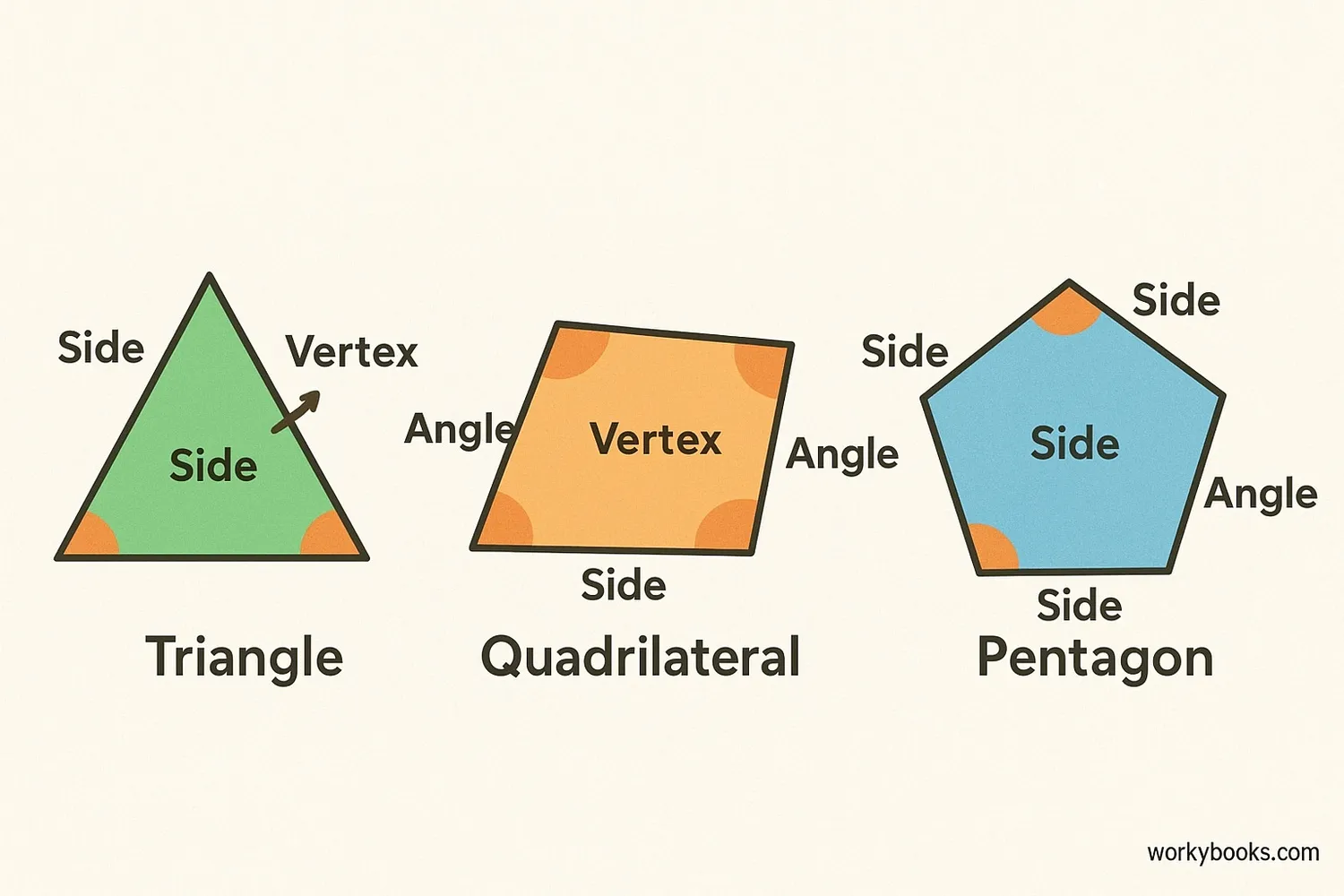
Plane figures have special properties that help us identify and classify them. These properties include:
Sides
The straight lines that form the shape's boundary
Vertices
Points where sides meet (corners)
Angles
The space between two intersecting sides
Symmetry
When one half mirrors the other half
These properties help us describe and compare different shapes. For example, a square has 4 equal sides, 4 vertices, and 4 right angles, while a triangle has 3 sides, 3 vertices, and 3 angles.
Examples of Plane Figures
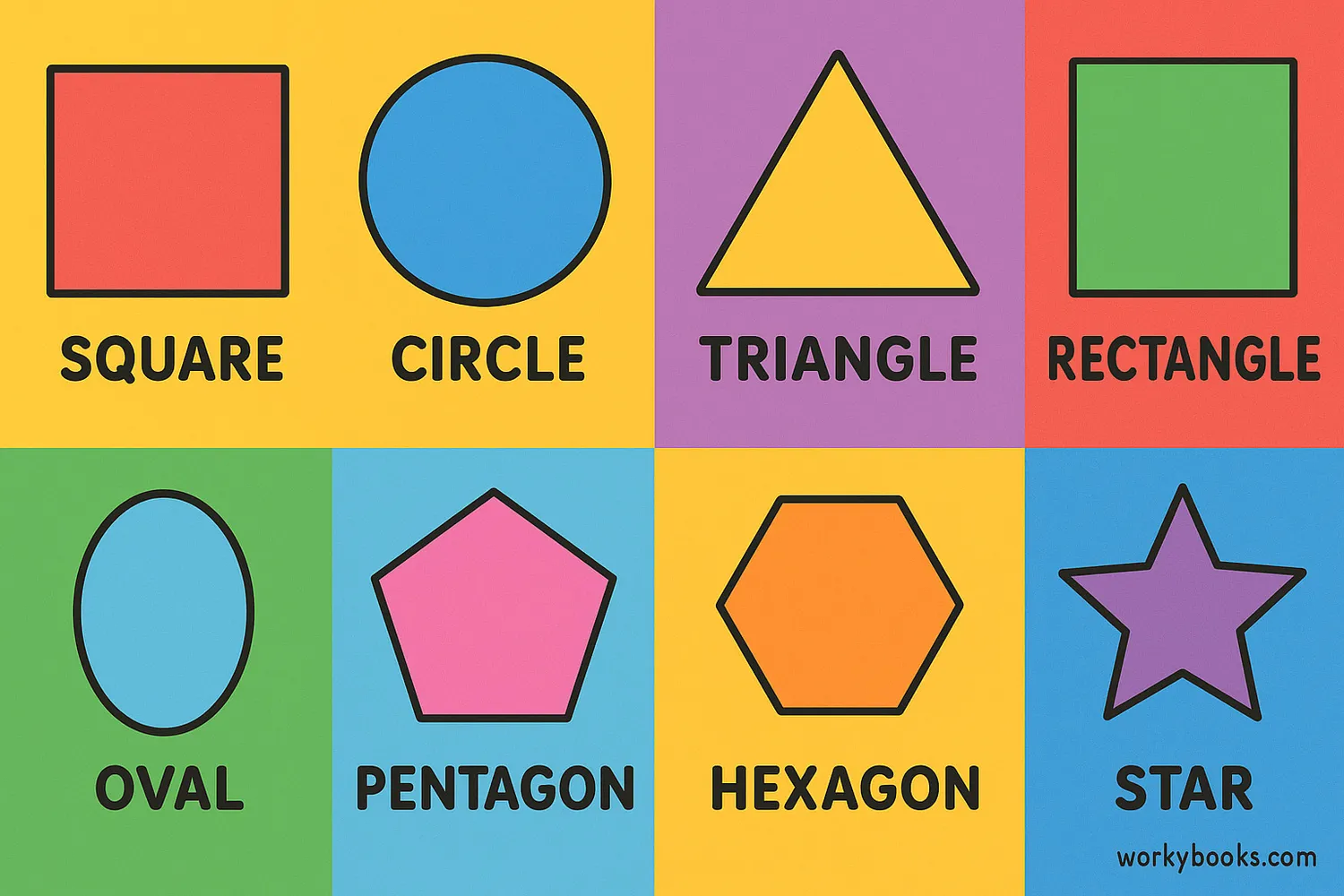
There are many different types of plane figures. Here are some of the most common ones:
Square
4 equal sides, 4 right angles
Circle
No sides, perfectly round
Triangle
3 sides, 3 angles
Rectangle
4 sides, opposite sides equal, 4 right angles
Rhombus
4 equal sides, opposite angles equal
Hexagon
6 sides, 6 angles
These shapes are the building blocks of geometry. More complex shapes can be created by combining these basic shapes.
Types of Plane Figures
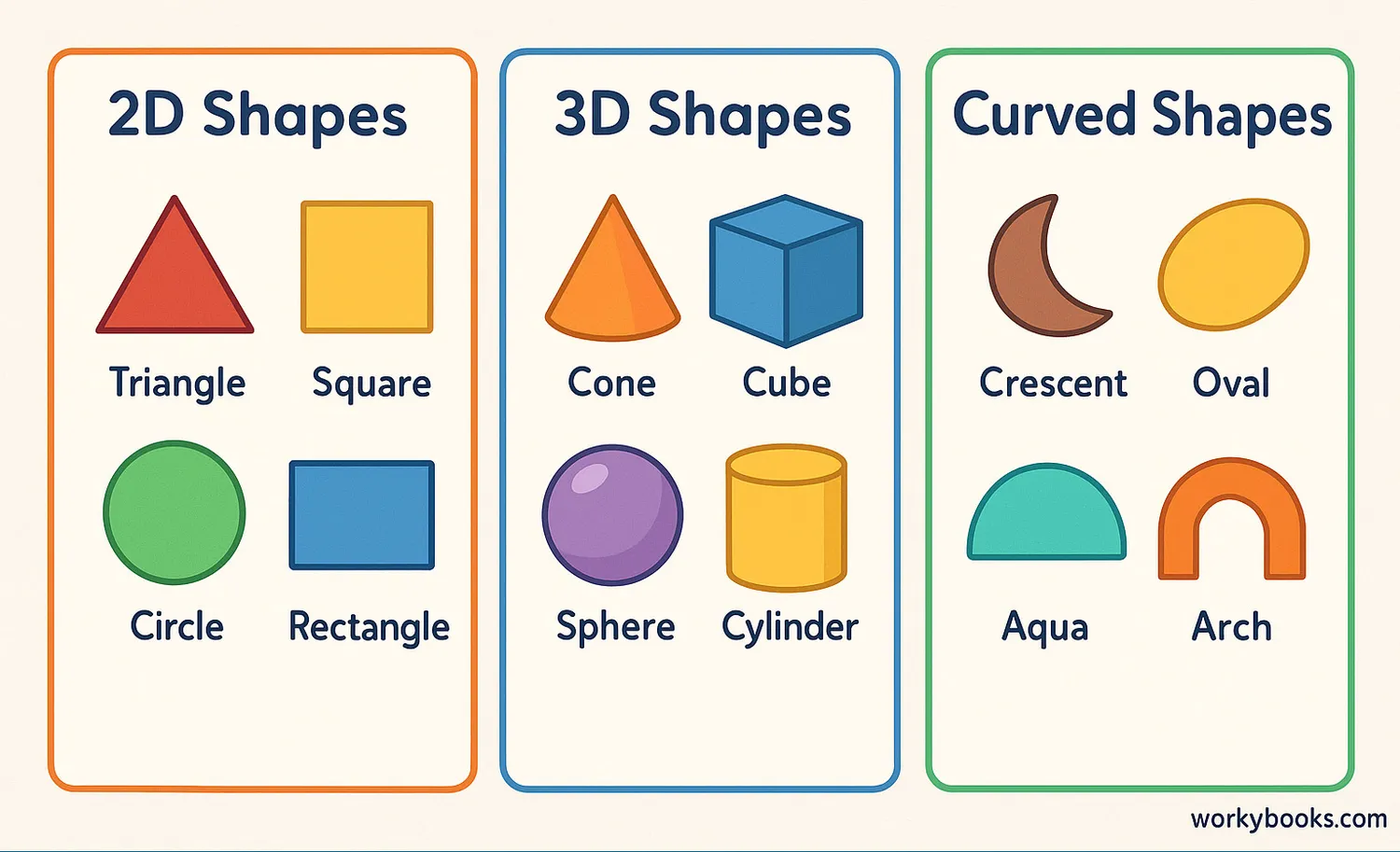
Plane figures can be grouped into different categories based on their properties:
Polygons
Closed shapes with straight sides (triangles, quadrilaterals, pentagons, etc.)
Curved Shapes
Shapes with curved boundaries (circles, ovals, ellipses)
Regular Shapes
All sides and angles are equal (square, equilateral triangle)
Irregular Shapes
Sides and/or angles are not all equal (scalene triangle, rectangle)
Understanding these categories helps us recognize patterns and relationships between different shapes. For example, squares are a special type of rectangle, and rectangles are a special type of quadrilateral.
Real World Examples
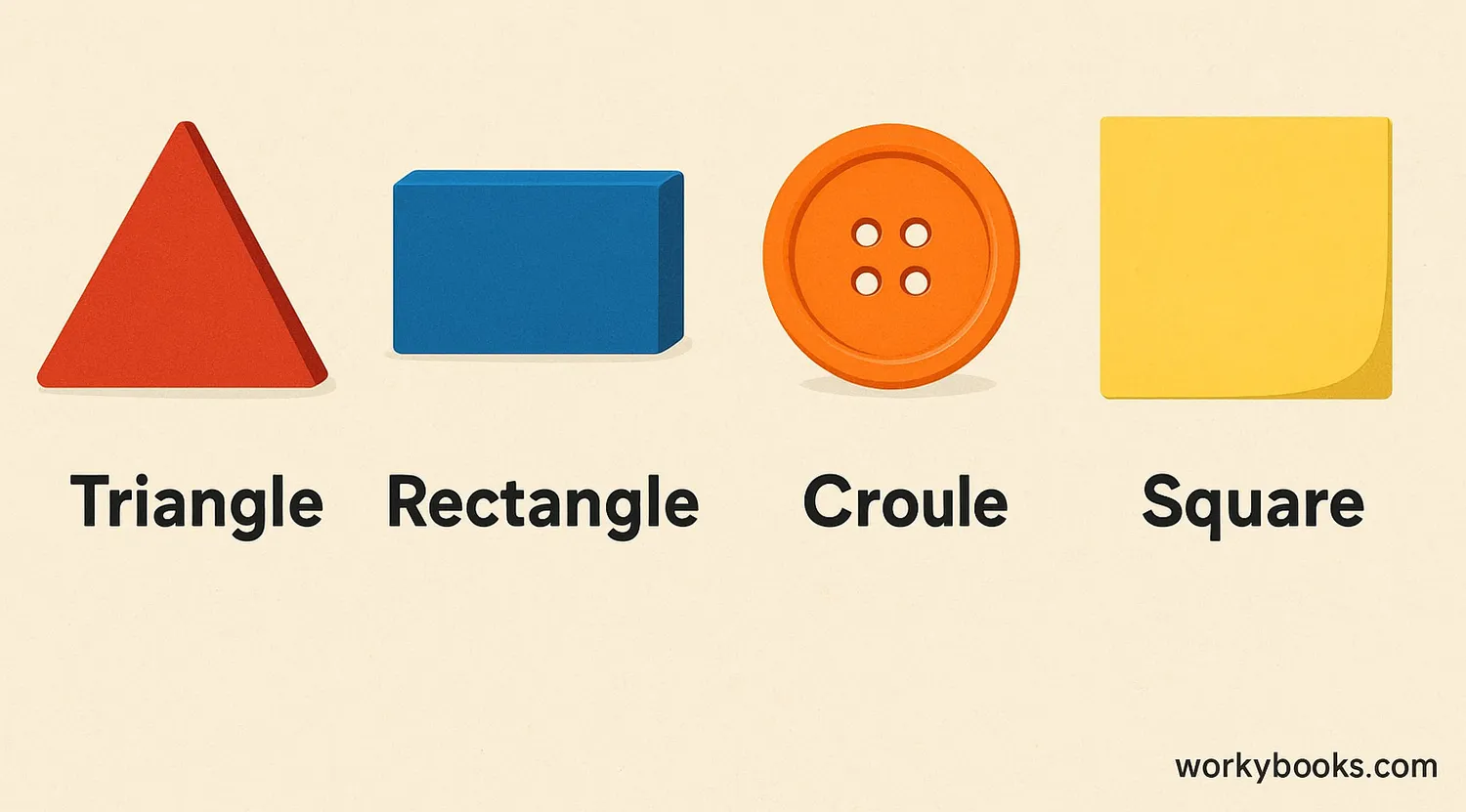
Plane figures aren't just math concepts - they're all around us in everyday objects! Recognizing these shapes helps us understand our world better:
Windows
Often rectangles or squares
Clocks
Usually circular in shape
Road Signs
Use various shapes to convey meaning
Food Items
Pizza slices are triangles, crackers are squares
Architects use plane figures when designing buildings. Artists use them to create patterns and compositions. Even nature is full of geometric shapes!
Plane Figures Quiz
Test your knowledge about plane figures with this quiz! Answer all 5 questions to see how much you've learned.
Frequently Asked Questions
Here are answers to some common questions about plane figures:
Math Trivia
Discover some interesting facts about geometry and plane figures!
Ancient Geometry
The ancient Egyptians used geometry over 4,000 years ago to measure and redistribute land after the Nile River flooded each year. The word "geometry" actually means "earth measurement" in Greek!
Nature's Geometry
Honeybees instinctively build their hives using hexagonal cells. This shape allows them to store the most honey using the least amount of wax - a perfect example of efficiency in nature!
Mysterious Pi
The ratio of a circle's circumference to its diameter (π) is approximately 3.14159, but its decimal representation goes on forever without repeating. Mathematicians have calculated over 50 trillion digits of pi!
Strong Triangles
Triangles are the strongest geometric shape. That's why you see them in bridges, towers, and other structures that need to be strong and stable. The triangle distributes weight evenly across all sides.





